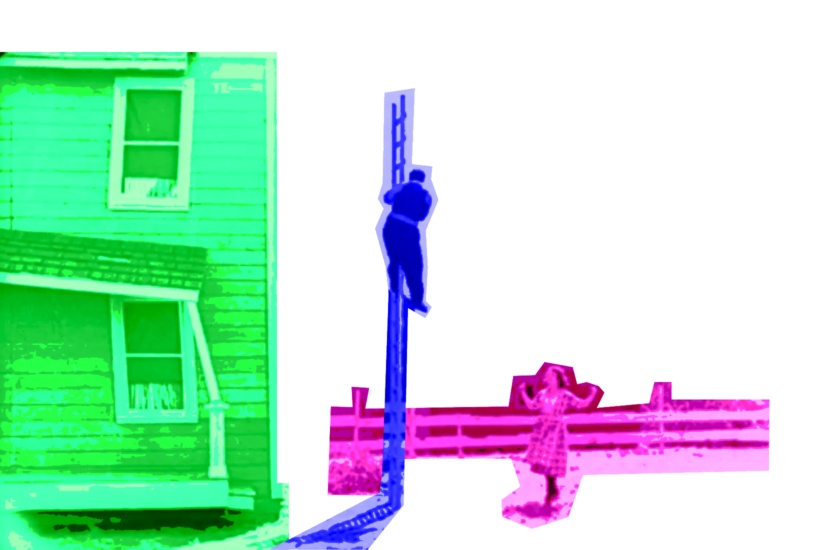What do we mean when we call a genre “new” — especially when that newness is indexed, not so much around a specific medium or narrative content, than a broader aesthetic practice? “Video in the internet age” sounds like a Buggles song, except instead of marking the death of radio, video here suggests the ongoing futurity of online social experience and experimentation. Less concerned with whether the video originates from its founding electronic file format or, more plausibly today, a cellphone camera, video in the internet age eschews classical genre theory’s attention to medium specificity in order to emphasize a potentially more democratic mode of digital transmission. Newness, then, lies not in a new medium per se, but in a process of circulation that is as much about reception as it is about material form.
The new genres of internet videos are mixed and many, though the one I keep returning to is technically not even a video. Unlike video, the gif (or “graphics interface format”) is soundless, requires no flash, and works in any browser on any device. Indeed, it is the gif’s medium simplicity that allowed its easy integration during the early days of popular internet use. The contemporary prevalence of the gif both reflects and obscures just how much it has been integrated into our own everyday aesthetic practices — incorporated into cellphone keyboards and Instagram stickers, gifs are always ready at hand. While video has since developed past its original formatting, the gif remains defined by its technological limits. Its ubiquity relies on a set of constraints: The gif lives because it doesn’t try to evolve.
While video has since developed past its original formatting, the gif remains defined by its technological limits
While the gif continues to multiply across platforms and devices as a genre of ongoing media “newness,” it nonetheless shares fundamental traits with the “old new” technologies of early 20th-century moving images. As I’ve written about elsewhere, the gif is suggestive of pre-cinematic devices in their shared aesthetic style, if not medium format. The first moving picture technologies and gifs both aim to visualize still images — often bodies, animals, or other life forms — in motion. While Edward Raymond Turner’s three-color projector and George Albert Smith’s Kinemacolor showed flickering pseudo three-dimensional images, for instance, the devices of the phenakistoscope and zoetrope — and, later, Muybridge’s zoopraxiscope — displayed a series of drawings or photographs so as to emulate an impression of their fluid movement. Early cinema’s obsession with life and liveliness — of visualizing the organic and bodily or revitalizing what was once inert or dead through motion — is discernible in the very names of these devices. It is a fascination that lives on in the gif, even as these pre-cinematic technologies have perished.
Early moving pictures share with gifs what we might call the structure of the “loop,” both producing an illusion of liveliness that is organized around repetition and seriality. Each cycle in a gif performs its own little theater of life, death, and rebirth. This is true even when the gif’s content does not feature an actual living thing, for most inorganic objects, once gifed, can’t help but thematize some sense of “life” in their very structural recurrence. Indeed, the endless looping of the animated gif formalizes its own life cycle as a popular medium that doesn’t so much “evolve” as simply repeat.
Each cycle in a gif performs its own little theater of life, death, and rebirth
The majority of gifs seem to me to fall under the category of “body genre” — a film term coined by Linda Williams in an essay specifically about melodrama, pornography, and horror. It’s no coincidence that Williams’s interest in these genres is not just in how they induce sensation in the viewer’s body, but also in how these genres are founded on a structure of repetition and suspense (think of melodrama’s cyclical endings, pornography’s “money shot,” horror’s serial killings). Sometimes the gif simply is used to communicate a feeling, a “mood.” We might see them in terms of technological prostheses that are less an extension of our physical bodies, as of our inner emotions. Through gifs, our nervous systems are seemingly magnified through the outsized expressiveness of images and icons that surely do not come from “within” us. As suggested by the monstrous moving lips or bulging eyes that Instagram now allows its users to place over videos of their own bodies (or not), the relationship between bodily function and bodily feeling is a perverse one.
As a body genre, gifs are frequently used to convey affects that are at once immediate and ambivalent. For even if the emotional “content” of the gif is explicitly that of urgent shock or disgust, its formal — and potentially endless — repetition does not simply emphasize, but also crucially attenuates, its dramatic effect. The gif might be the body genre par excellence, then, insofar as repetition — and suspense — is embedded in its very structural DNA. How do you kill an image that appears to be endless? Alternately, how do we understand such an image to be “alive” in the first place? The uncanny animation of life continues to define the gif.
My favorite gifs are those that feature marvelous bodily acts in which each loop opens room for a little doubt. Will Buster Keaton fall off the ladder this time? Might Rob Ford not run over that city councilor? What happens inside the space of a continuous loop? What happens outside and between it? Gifs move to resurrect the past as much as finally to return to it; they focus on a moment, freezing an event while simultaneously trying to keep it living.
